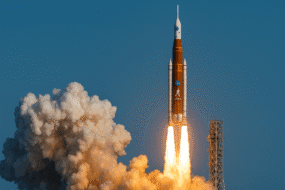India marked a proud moment in its space exploration journey as Shubhanshu Shukla launched aboard SpaceX’s Dragon spacecraft from Kennedy Space Center in Florida for a 14-day space mission. Becoming the second Indian astronaut in space, Shukla achieved a remarkable milestone by becoming the first Indian to dock with the International Space Station (ISS).
As the mission pilot, Shukla plays a critical role during the docking process, ensuring a smooth and safe approach to the ISS. The spacecraft’s docking—entirely autonomous but closely monitored by both onboard astronauts and ground teams—is one of the mission’s most technically complex phases.
🔧 How the Docking Works:
The process begins with a series of engine burns, including a “transfer” burn and a short “co-elliptic” burn, reducing the gap between Dragon and the ISS to just 2.5 kilometers. An “out-of-plane” burn then adjusts Dragon’s trajectory laterally, aligning it perfectly with the ISS docking port.
Once aligned, the spacecraft initiates the approach phase—firing engines for 90 seconds to close in from 7 kilometers behind to just 400 meters below the station. This approach is precisely designed so that in case of any malfunction, Dragon would still require 24 hours to get close to the ISS—ensuring high safety margins.
✅ Checkpoints Before Docking:
- Waypoint 0 – 400 meters from ISS
- Waypoint 1 – 220 meters
- Waypoint 2 – 20 meters (docking line-up point)
At Waypoint 2, the Crew Hands-Off Point (CHOP) ensures that if any system error occurs, Dragon will automatically retreat without human intervention.
🔗 Final Docking & Entry:
Once the soft capture mechanism engages and sensors verify proper alignment, hooks lock the spacecraft to the ISS. After pressurization and safety checks, the crew members will enter the ISS. Power, data, and communication systems from Dragon are then integrated with the station’s systems.
Shukla’s duties include coordinating with the spacecraft commander, ISS crew, and mission control, ensuring all systems perform seamlessly during this critical mission phase.
🎓 Trained for Success:
Shukla’s extensive training at NASA’s Johnson Space Center, SpaceX headquarters, and Russia’s Yuri Gagarin Cosmonaut Training Centre has prepared him for the challenges of human spaceflight. His successful docking marks a crucial step towards India’s Gaganyaan mission, slated for 2027, where India plans to send its first astronauts on a fully indigenous mission.
















